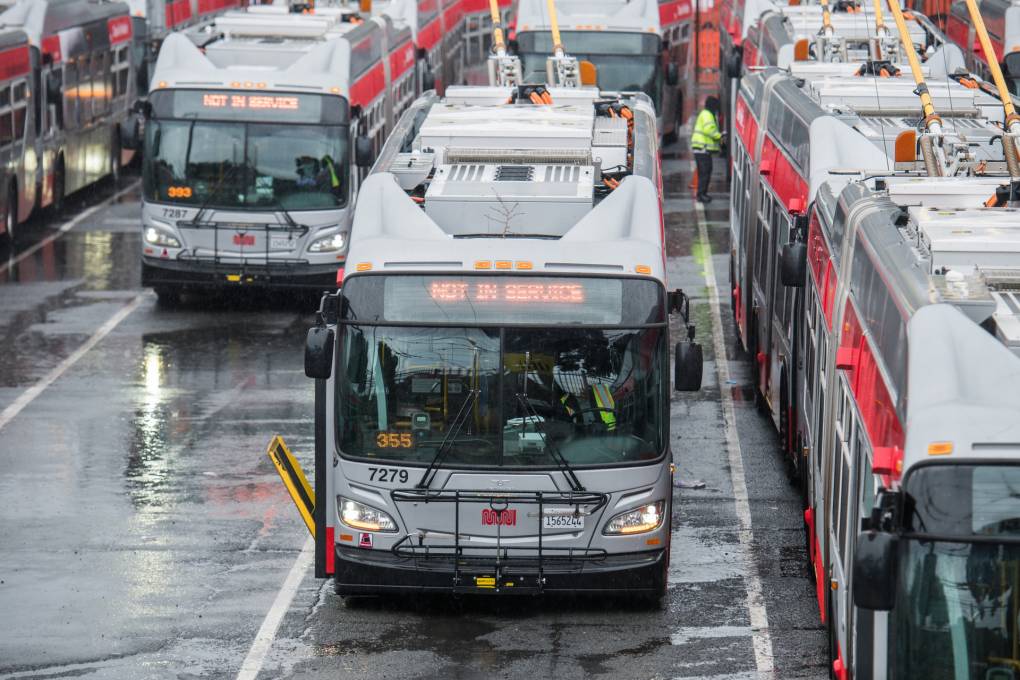Parking fees and fines made up about 28% of the SFMTA's projected revenue for the 2019-20 fiscal year. But that cash stream dried up as the agency stopped enforcing parking meters and residential parking zones after shelter-at-home orders were imposed last March. The SFMTA now estimates that parking revenue will fall $220 million below budgeted levels for the period from July 1, 2019 through June 30, 2022.
Marenco said a renewed emphasis on collecting transit fares would also be crucial to increasing SFMTA revenue and heading off layoffs. The agency's latest projections estimate that it will collect about $250 million less in fares during the fiscal 2019-2022 than had been budgeted — a shortfall due to a 70% decline in ridership.
The SFMTA's Tumlin said earlier this month that Muni would resume fare enforcement beginning Dec. 1, an announcement that brought immediate pushback from transit activists who argued that such a move will impose an additional burden on riders who are themselves struggling financially because of the pandemic.
Muni and the SFMTA, like virtually all large transit operators across the county, has managed to stave off draconian budget cuts so far only because of federal emergency aid. The CARES Act approved in March provided $1.3 billion to Bay Area public transit systems.
Muni's share of that funding was $374 million, and Monday's presentation made it clear that without that aid, the system would have been forced to make deep cuts far earlier than those being discussed now.
Transit agencies nationwide have appealed for another round of operating aid, and as much as $32 billion would be provided in already-approved House legislation. But that aid, like other pandemic relief, has been stalled by major disagreements between House and Senate leadership on the size of a new relief package.
Confronting a Transit 'Death Spiral'
Tumlin said Monday that another round of federal aid is likely the agency's best hope to head off massive layoffs.
"We have a fairly short-term problem," he said. "The trouble is the unique economics of public transit, which are known as 'the death spiral.' Because we're dependent on fares, and because people have mobility choices, if we have a loss of fare revenue, we have a loss of service. And if we have a loss of service, that makes our service less attractive, which means additional loss of fare revenue, which means additional cuts in service."
Tumlin said the path to full recovery requires resolving the pandemic through public health measures and making vaccines widely available. But he added that the fix for the COVID-driven fiscal crisis is more straightforward and criticized the federal government for being slow to act.
"It is unconscionable to me that in a nation like the United States of America, that the very people who have carried us through this pandemic, who have delivered essential workers to work, are now at risk of losing their paychecks and their health care," Tumlin said. "... These folks are heroes."
Muni is only the latest in a growing list of Bay Area transit agencies forced to contemplate — or go ahead with — worker layoffs.
Earlier this month, the Golden Gate Bridge, Highway and Transportation District voted to lay off 146 employees, virtually all of them in the agency's bus and ferry operations.
BART, which is staring at a budget deficit of $177 million in fiscal 2021-22, has launched an early retirement incentive program to see how far it can shrink its 3,600-member workforce without resorting to layoffs. Exactly how many employees take advantage of the initiative won't be known until later this month.
KQED's Joe Fitzgerald Rodriguez contributed to this report.

